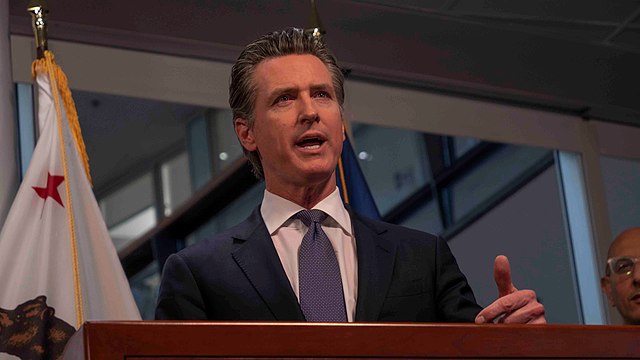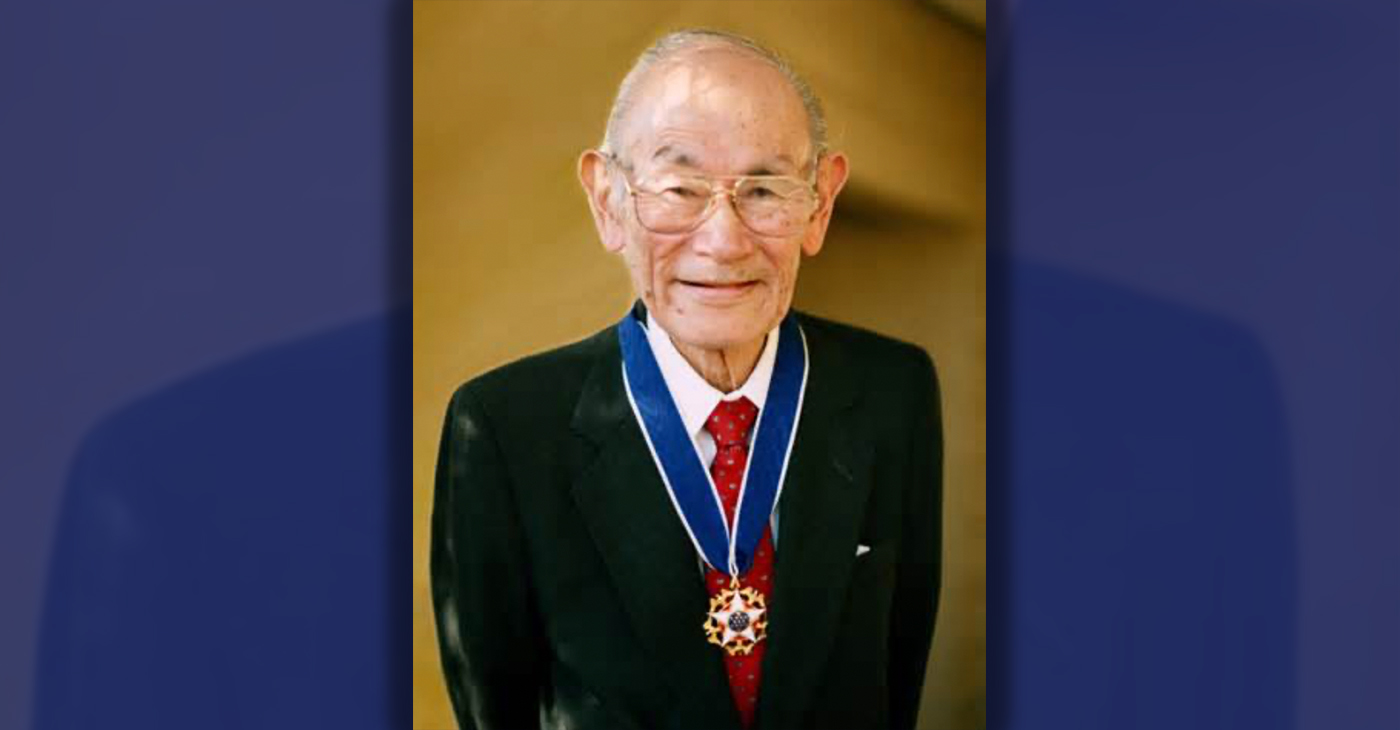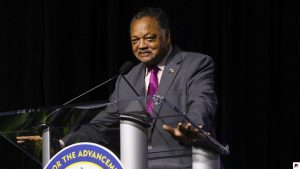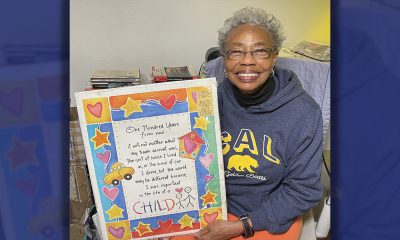Community
Newsom Unveils Revised Budget Proposal, $100 Billion Post-Pandemic Recovery Plan
The $267.8 billion budget includes a $196.8 billion general fund and is roughly $41 billion more than the initial budget Newsom proposed in January.

Gov. Gavin Newsom unveiled his revised state budget proposal May 14, including a $100 billion economic recovery plan and scores of one-time spending thanks to a nearly $76 billion projected surplus.
The $267.8 billion budget includes a $196.8 billion general fund and is roughly $41 billion more than the initial budget Newsom proposed in January.
The increase in proposed spending was made possible by the state receiving billions more dollars in tax revenue than expected over the last year as the state’s wealthiest residents got even wealthier, according to Newsom and state budget officials.
“That (recovery plan) is the biggest economic recovery package — period, full stop — in California history,” Newsom said.
Newsom spent the week leading up to the announcement teasing bits and pieces of the budget and the recovery package, which he has dubbed the California Comeback Plan.
The plan includes sending $600 stimulus checks to state residents who made up to $75,000 last year, spending billions to assist with rent and utility bills that have gone unpaid due to the coronavirus pandemic, making pre-kindergarten available to all 4-year-olds in the state and some $4 billion in relief grants for small businesses.
Newsom touted the budget’s $93.7 billion in public education funding as the most ever allocated to schools by the state.
That figure also does not include some $15.3 billion in federal education funding and another $8.1 billion in tax revenue that could be funneled to education spending via the “Gann limit,” a 1979 voter-approved ballot measure that puts an annual limit on government spending.
When the limit is reached, the remaining money must be returned to taxpayers. The roughly $12 billion that will fund the $600 stimulus checks is also part of that strategy to disperse money that surpassed the Gann limit, according to state officials.
The education funding would amount to roughly $14,000 per student across the state, double what the state was spending per student a decade ago, according to Newsom.
The state would spend $900 million in 2022-2023 and $2.7 billion in 2024-2025 under the plan to make pre-kindergarten universally available. Some 250,000 students would gain access to pre-K once fully implemented, Newsom said.
The budget includes $3.3 billion to train and support the additional teachers needed to expand the availability of pre-kindergarten and cut the ratio of pre-K students to teachers from 24-to-1 to 12-to-1.
“We want to make public schools essential,” Newsom said. “We want to make them competitive. We want to make our public education system enriching. We want to make our public education system what it’s capable of being.”
The funding plan also includes $2 billion to open personal savings accounts for some 3.7 million low-income, foster, homeless and English-learning youth.
The savings accounts would be seeded with $500 base deposits for every student in the program and an additional $500 for students who are homeless or in foster care.
The accounts could eventually be used to help pay for college or start a business, Newsom said, noting that some studies have found that children with early financial access and planning are seven times more likely to go to college.broadband internet
“This is an opportunity to address generational poverty,” Newsom said. “This is an opportunity to stretch a college-going mind but also an opportunity to look at trade school and entrepreneurial spirit… because we recognize there are many pathways for our children.”
The budget proposal also includes billions to help unhoused residents get off the streets; build some 46,000 housing units for unhoused residents; clean the state’s streets, freeways and neighborhoods; install broadband internet across the state; modernize the state’s infrastructure; invest in clean and renewable energy sources; and invest in drought and wildfire preparedness and resilience.
Newsom framed the spending in the proposed budget as economic supports that will help the state’s economy come “roaring back” from last year’s nadir in the pandemic’s early days, which forced the state to make financial cuts to shore up a roughly $54 billion budget deficit.
The revised budget proposal, while released on schedule, also comes as Newsom faces an effort to recall him and multiple Republican candidates that have argued the projected surplus is so large only because the state taxes its residents too much.
State Republican Party Chair Jessica Millan Patterson said in a statement that the week-long budget rollout — which Newsom has done in the past — was a de-facto response tour to the recall effort and called him “shameless” for taking some credit in the state’s economic rebound.
“The only credit he and Democrats deserve is for California’s shuttered businesses, sky-high unemployment, deteriorating unemployment department, shrinking population, devastating homeless crisis and failing education system that is punishing students and parents through its union-first virtual schooling,” she said.
State Sen. Nancy Skinner, D-Berkeley, praised Newsom for the revised budget proposal’s priorities.
“Thank goodness California is in the position to make transformative investments to end family homelessness, lift those hurt by the pandemic and properly fund our schools,” said Skinner, the chair of the Senate Budget Committee.
“Gov. Newsom’s proposed budget does that and more and complements the state Senate’s priorities,” she said. “Let the negotiations begin.”
Full details on Newsom’s revised budget proposal can be found at http://www.ebudget.ca.gov.
Newsom and the state Legislature will have until June 15 to approve the budget before the new fiscal year begins on July 1.
Activism
Oakland Post: Week of April 17 – 23, 2024
The printed Weekly Edition of the Oakland Post: Week of April 17 – 23, 2024

To enlarge your view of this issue, use the slider, magnifying glass icon or full page icon in the lower right corner of the browser window. ![]()
Activism
Oakland Schools Honor Fred Korematsu Day of Civil Liberties
Every Jan. 30, OUSD commemorates the legacy of Fred Korematsu, an Oakland native, a Castlemont High School graduate, and a national symbol of resistance, resilience, and justice. His defiant stand against racial injustice and his unwavering commitment to civil rights continue to inspire the local community and the nation. Tuesday was “Fred Korematsu Day of Civil Liberties and the Constitution” in the state of California and a growing number of states across the country.

By Post Staff
Every Jan. 30, OUSD commemorates the legacy of Fred Korematsu, an Oakland native, a Castlemont High School graduate, and a national symbol of resistance, resilience, and justice.
His defiant stand against racial injustice and his unwavering commitment to civil rights continue to inspire the local community and the nation. Tuesday was “Fred Korematsu Day of Civil Liberties and the Constitution” in the state of California and a growing number of states across the country.
One OUSD school is named in his honor: Fred T. Korematsu Discovery Academy (KDA) elementary in East Oakland.
Several years ago, founding KDA Principal Charles Wilson, in a video interview with anti-hate organization “Not In Our Town,” said, “We chose the name Fred Korematsu because we really felt like the attributes that he showed in his work are things that the children need to learn … that common people can stand up and make differences in a large number of people’s lives.”
Fred Korematsu was born in Oakland on Jan. 30, 1919. His parents ran a floral nursery business, and his upbringing in Oakland shaped his worldview. His belief in the importance of standing up for your rights and the rights of others, regardless of race or background, was the foundation for his activism against racial prejudice and for the rights of Japanese Americans during World War II.
At the start of the war, Korematsu was turned away from enlisting in the National Guard and the Coast Guard because of his race. He trained as a welder, working at the docks in Oakland, but was fired after the bombing of Pearl Harbor in 1941. Fear and prejudice led to federal Executive Order 9066, which forced more than 120,000 Japanese Americans out of their homes and neighborhoods and into remote internment camps.
The 23-year-old Korematsu resisted the order. He underwent cosmetic surgery and assumed a false identity, choosing freedom over unjust imprisonment. His later arrest and conviction sparked a legal battle that would challenge the foundation of civil liberties in America.
Korematsu’s fight culminated in the Supreme Court’s initial ruling against him in 1944. He spent years in a Utah internment camp with his family, followed by time living in Salt Lake City where he was dogged by racism.
In 1976, President Gerald Ford overturned Executive Order 9066. Seven years later, the 9th Circuit Court of Appeals in San Francisco vacated Korematsu’s conviction. He said in court, “I would like to see the government admit that they were wrong and do something about it so this will never happen again to any American citizen of any race, creed, or color.”
Korematsu’s dedication and determination established him as a national icon of civil rights and social justice. He advocated for justice with Rosa Parks. In 1998, President Bill Clinton gave him the Presidential Medal of Freedom saying, “In the long history of our country’s constant search for justice, some names of ordinary citizens stand for millions of souls … To that distinguished list, today we add the name of Fred Korematsu.”
After Sept. 11, 2001, Korematsu spoke out against hatred and discrimination, saying what happened to Japanese Americans should not happen to people of Middle Eastern descent.
Korematsu’s roots in Oakland and his education in OUSD are a source of great pride for the city, according to the school district. His most famous quote, which is on the Korematsu elementary school mural, is as relevant now as ever, “If you have the feeling that something is wrong, don’t be afraid to speak up.”
Community
For Cervical Cancer Month, Medical Community Focused on Education
January was Cervical Cancer Awareness Month. Physicians, advocates and others in the medical community commemorated the month by raising awareness about a form of cancer they say is highly preventable and treatable. Cervical cancer is caused by a virus called the human papillomavirus (HPV) and it develops slowly over time but can be prevented with proper care in girls as young as 13 years old.

By Magaly Muñoz
January was Cervical Cancer Awareness Month.
Physicians, advocates and others in the medical community commemorated the month by raising awareness about a form of cancer they say is highly preventable and treatable.
Cervical cancer is caused by a virus called the human papillomavirus (HPV) and it develops slowly over time but can be prevented with proper care in girls as young as 13 years old.
Sonia Ordonez, an OBGYN and gynecology surgeon at Kaiser Permanente, stated that as soon as people with cervixes reach the maturity reproductive age, they should start taking preventative measures like getting the HPV vaccine. The vaccine involves a series of two-doses for people aged 9 through 14 or three-doses for people 15 through 45 years old.
“I see a lot of young women who can’t remember or may not have gotten [the vaccine] when they were younger, or maybe got one, but we can give them the series of vaccines and restart at any point in time,” Ordonez said.
She said that cervical cancer is not the only cancer caused by HPV. Strains of the virus can also lead to throat, anal and penile cancers.
Screening is also an effective way to check for cervical cancer and should be done every three years after someone turns 21, doctors recommend. It is best to start as early as possible to catch occurrences early.
Ordonez said that this cancer is also more likely found in people of color and has led to more deaths overall.
A Mayo Clinic article published last month stated that Black women are more likely to be diagnosed and die of cervical cancer, compared to White women in the U.S.
2,000 Black women are diagnosed every year with cervical cancer and 40% die as a result.
“This disparity is not due to genetic differences among White, Black or Hispanic women, but rather related to systemic racism, access to healthcare and socioeconomic factors,” Dr. Olivia Cardenas-Trowers, a Mayo Clinic urogynecologist, said in the article.
Ordonez stated that immigrant women are also highly susceptible to the cancer, as many Latin American countries may not have accessibility to screenings or lack of insurance makes it harder for them to get tested.
Hispanic women are 40% more likely to be diagnosed with cervical cancer, and 30% more likely to die from it, as compared to non-Hispanic White women, according to the Office of Minority Health.
Family medicine physician, Joy Anyanwu, stated that the pandemic contributed to hesitancy about getting cervical cancer screenings among some women. Other factors are people’s aversion to vaccines, parents not wanting to believe that their children are or will become sexually active, and doubt about the overall effectiveness of the vaccine.
“The vaccine is very safe — over 97% effective in preventing cervical cancer,” Anyanwu said. “Even if you aren’t having sex, the earlier you start would actually help.”
Anyanwu said she understands that parents might not want to ask questions about their children’s reproductive health, but it’s a mindset that can be a barrier to having important conversation about prevention or care.
To keep families their families and communties healthy, the doctor emphasized that people should prioritize keeping up with their vaccine series and going to screenings every year.
-

 Activism4 weeks ago
Activism4 weeks agoOakland Post: Week of March 20 – 26, 2024
-

 #NNPA BlackPress3 weeks ago
#NNPA BlackPress3 weeks agoCOMMENTARY: D.C. Crime Bill Fails to Address Root Causes of Violence and Incarceration
-

 #NNPA BlackPress3 weeks ago
#NNPA BlackPress3 weeks agoMayor, City Council President React to May 31 Closing of Birmingham-Southern College
-

 #NNPA BlackPress3 weeks ago
#NNPA BlackPress3 weeks agoCOMMENTARY: Lady Day and The Lights!
-

 #NNPA BlackPress3 weeks ago
#NNPA BlackPress3 weeks agoFrom Raids to Revelations: The Dark Turn in Sean ‘Diddy’ Combs’ Saga
-

 #NNPA BlackPress3 weeks ago
#NNPA BlackPress3 weeks agoBaltimore Key Bridge Catastrophe: A City’s Heartbreak and a Nation’s Alarm
-

 Activism3 weeks ago
Activism3 weeks agoOakland Post: Week of March 27 – April 2, 2024
-

 #NNPA BlackPress3 weeks ago
#NNPA BlackPress3 weeks agoBaltimore’s Key Bridge Struck by Ship, Collapses into Water














































